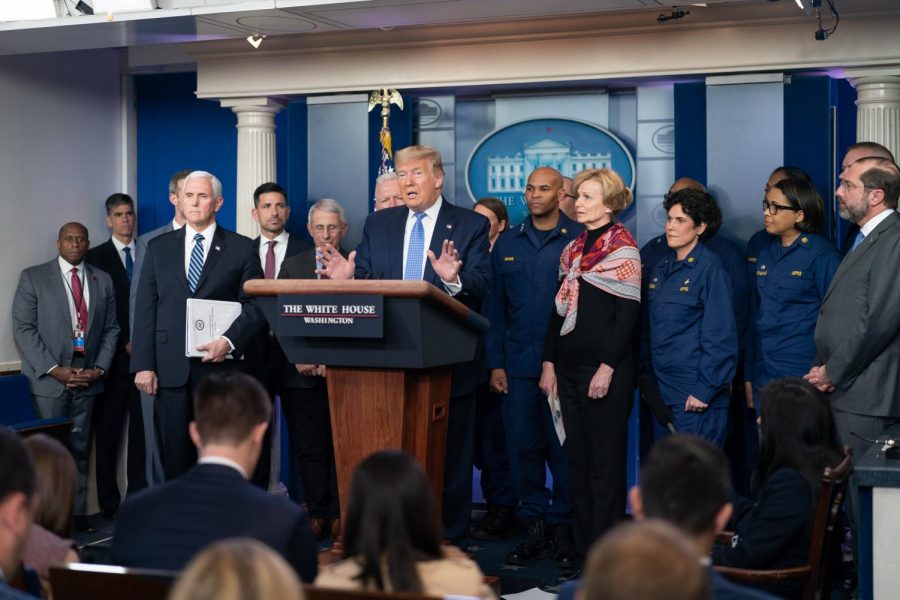Gates: Trump’s plan to reopen the economy could end in disaster
The White House from Washington, DC / Public domain
President Trump’s new plan aims to reopen the US economy.
April 23, 2020
It’s been nearly two months since COVID-19 forced millions of Americans to shelter-in-place. One unintended effect of social distancing is the economic downturn. Business has slowed or shut down everywhere, leading to 26 million Americans filing for unemployment—a number that is only growing. There is serious talk of a global recession. A vocal minority of Americans have taken to the streets to call for an end to social distancing altogether.
It is in this climate that President Donald Trump’s announced a three-step plan to reopen the economy. The plan is a set of recommendations for governors to gradually allow businesses to reopen and life to return to normal. To begin, states must show a decrease in cases over two weeks, and each phase must last at least two weeks.
In phase one, large venues like churches and restaurants reopen under strict physical distancing measures. In phase two, non-essential travel can resume and schools reopen. Then in phase three, care homes and hospitals can reopen to visitors, and public interaction can resume while physical distancing.
The question of how to lift social distancing measures is something every country must eventually grapple with. Knowing when the time is right is key. While concerns about the health of the economy are valid, talk of reopening the United States is premature. The country lacks the supplies and testing needed to keep the virus at bay. Moving forward now would only make the situation worse.
The United States currently leads the world in confirmed cases, with over 800,000 and more being reported every day. Health experts warn that the U.S. currently lacks the testing capacity needed to safely reopen the country. Researchers at Harvard University estimate that the U.S. must ramp up testing to 500,000 to 700,000. The current average for the month is 146,000.
Production issues have further delayed tests as governors like Gov. Larry Hogan of Maryland have criticized the federal government for not doing enough to help them meet demand.
In addition, the country is experiencing a dire shortage of personal protective equipment (PPE) for health care workers. A survey by GetUsPPE.org took responses from 978 facilities, the majority of which reported they would run out of supplies within two weeks. They have to compete for equipment at inflated costs, which can take months to arrive. The federal government has been “helping” them by intercepting shipments at the last minute and redistributing supplies.
Even if states did ease restrictions, there’s no guarantee things will go back to how they were before. The impacts of social distancing could last for months or years after COVID-19 ends. The fear infection alone is enough to keep customers at bay. Then after the recession, there won’t be very many people with money left to spend.
Adequate testing and PPE are two of the United States’ biggest weaknesses. Without testing, health care workers cannot track and isolate those exposed to the virus. Without PPE, workers are at an increased risk of getting infected and infecting others. All of this could result in an outbreak that would overwhelm hospitals and devastate the population. Countless people could die or suffer without treatment that don’t have to. The economy is suffering, but there won’t be an economy to save if everyone is either sick or too afraid to leave the house.
Trump’s plan seems more like a ploy to boost his reelection campaign and shift responsibility onto governors. His administration has shown time and again that they are not capable of keeping this situation under control. Until they get it together, this crisis is nowhere near over.









